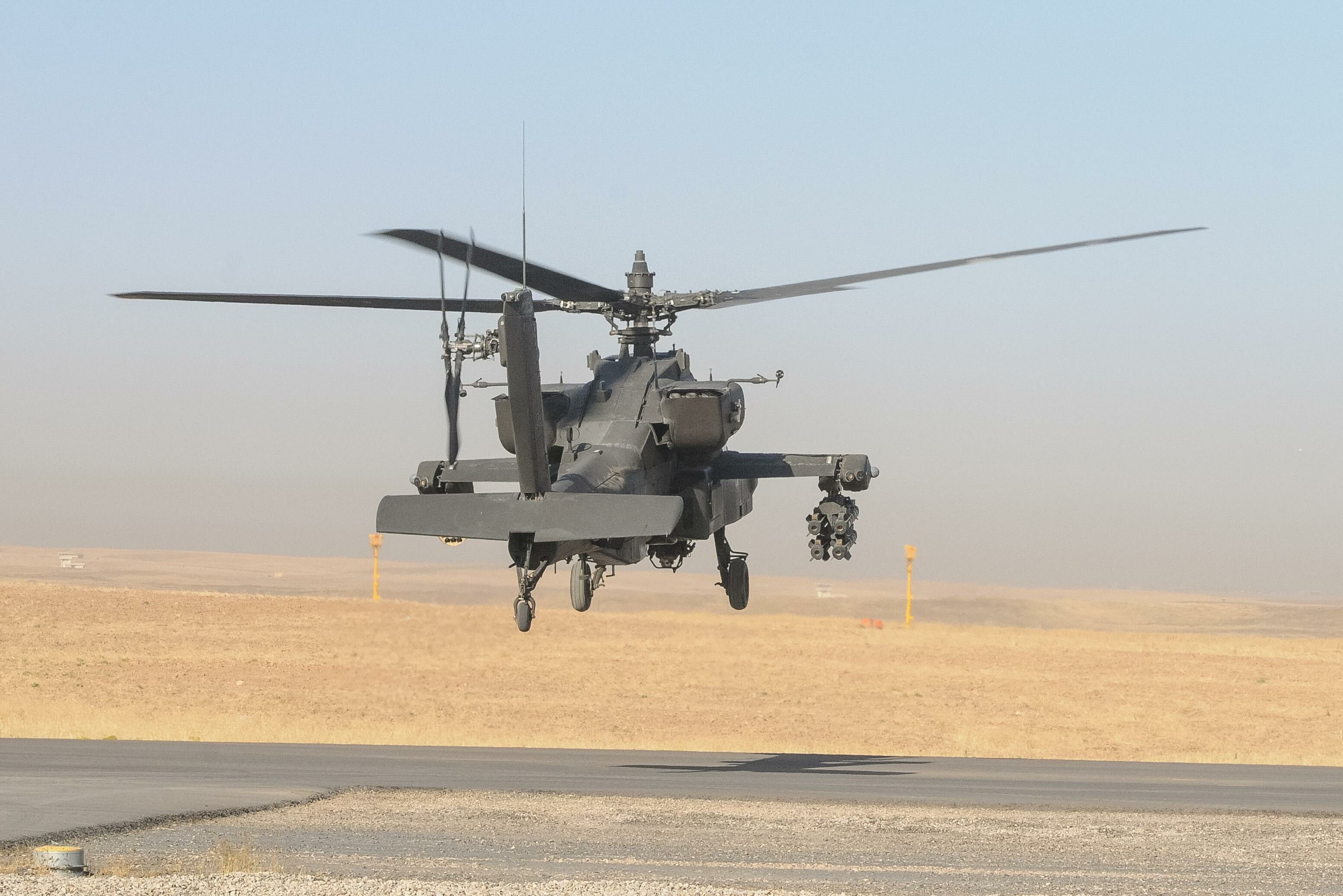
ERBIL, Iraq – An AH-64E Apache helicopter from the 4th Squadron, 6th Cavalry Regiment, Task Force Saber, hovers prior to taking off to conduct a mission, July 11,2017, Erbil, Iraq. (U.S. Army photo by Capt. Stephen James)
On February 19, the United States Central Command announced that coalition forces and the Syrian Democratic Forces (SDF) captured an ISIS official during a joint operation in Syria’s northeastern region that took place a day earlier.
The command said in a statement that the official, who was identified only by his nom de guerre Batar, was involved in planning attacks on SDF-guarded detention centers and manufacturing improvised explosive devices.
“Extensive planning went into this operation to ensure its successful execution. No civilians and no SDF or US forces were killed or injured,” the statement reads.
A few days earlier, specifically on February 16, the coalition and the SDF conducted two similar counter-terrorism operations in northeastern Syria.
The first operation targeted Hamza al-Homsi, a senior leader of ISIS. The terrorist triggered an explosion after being cornered at his hideout in Deir Ezzor, killing himself and wounding four U.S. service members. During the second operation, the leader of one of the terrorist group’s assassination cells in the region was eliminated.
The U.S.-led coalition stepped up its counter-terrorism operations in northeastern Syria recently. As a result, several senior members of ISIS were killed, or captured.
Despite these efforts, ISIS influence in areas controlled by the U.S. and the SDF remains strong. The American military presence in the region in itself is one of the reasons driving some to join the ranks of the terrorist group.





